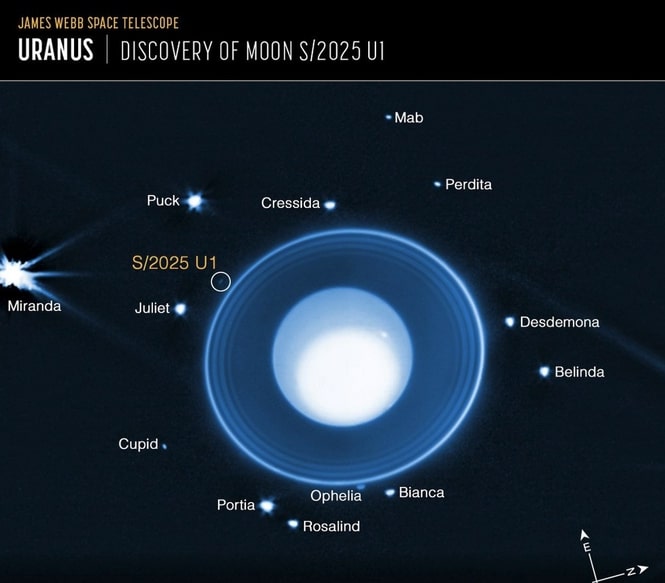Now Reading: Astronomers Discover 29th Moon Orbiting Uranus
-
01
Astronomers Discover 29th Moon Orbiting Uranus
Astronomers Discover 29th Moon Orbiting Uranus

Quick Summary
- A previously unknown moon orbiting uranus has been discovered using NASAS James Webb Space Telescope.
- This discovery expands Uranus’ known satellite count to 29.
- The moon was detected on February 2,2025,during a Webb telescope observation by a team led by the Southwest Research Institute (SwRI).
- The new moon is approximately six miles (10 kilometers) in diameter and was undetectable through earlier methods like Voyager 2 due to its small size.
- It is located about 35,000 miles (56,000 kilometers) from Uranus’ centre in the equatorial plane. its orbit lies between two other moons: Ophelia and Bianca.
- Its nearly circular orbit suggests it likely formed close to its current position.
Indian Opinion analysis
The discovery of Uranus’ 29th moon underscores the ongoing meaning of advanced space telescopes like NASA’s James Webb for deep solar system explorations. For India-emerging as an active participant in global space missions-the development highlights the necessity of investing further in scientific instrumentation capable of detecting faint celestial bodies. Achievements like this can inspire Indian research institutions to collaborate internationally or develop indigenous technology for better planetary studies.
With ISRO’s growing prominence through missions such as Chandrayaan and Mangalyaan, India could aim at contributing novel insights into outer planet systems. Such initiatives may enhance India’s strategic positioning within global scientific partnerships while fostering increased public interest and investment in astronomy and astrophysics development domestically.Read More

























